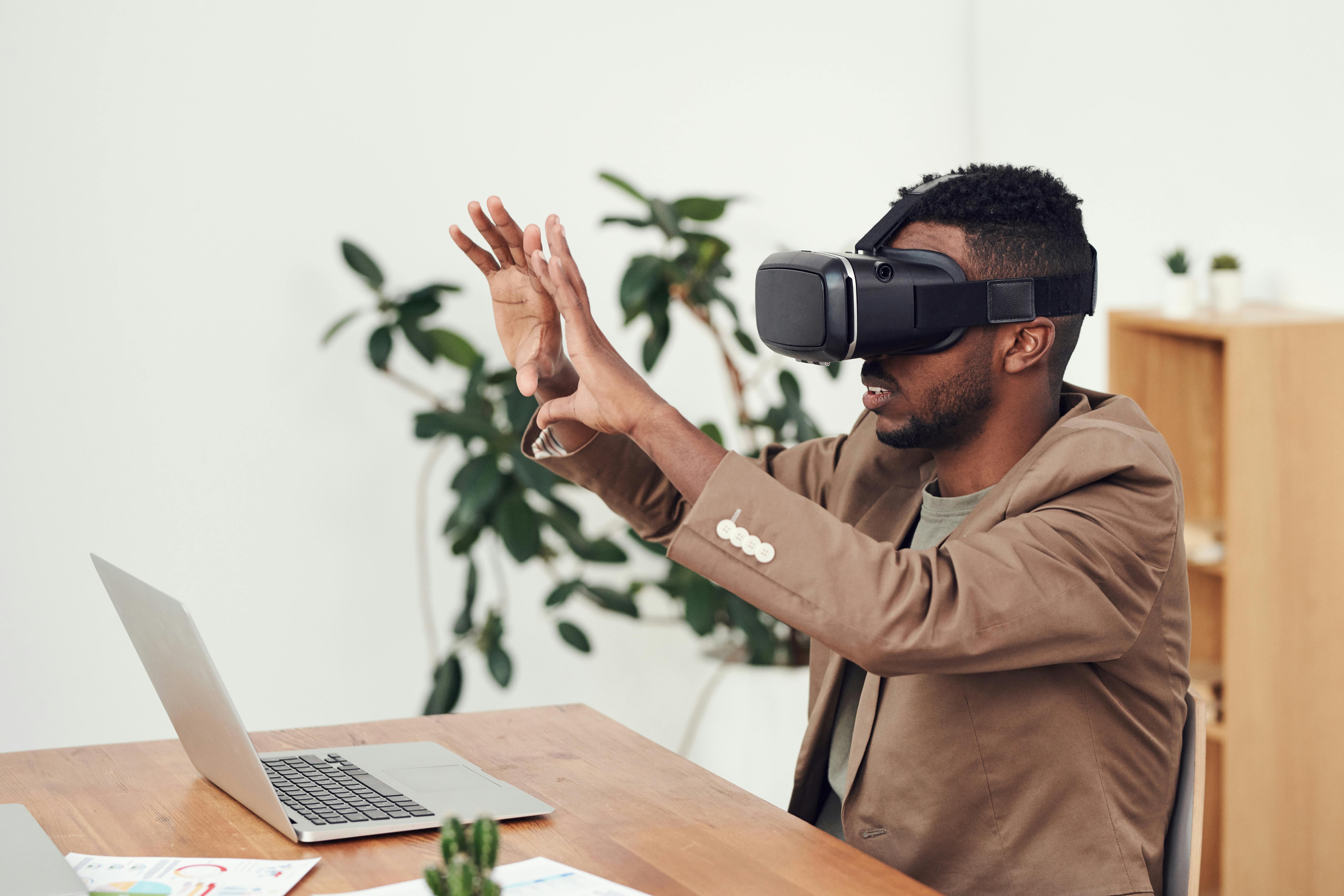Virtual Reality Therapy: Step into Healing
Nov 05, 2025
Imagine putting on a headset and stepping into a world designed entirely for your well-being—a quiet forest, a sunlit beach, or a serene mountain path. With Virtual Reality Therapy (VRT), this isn’t science fiction—it’s a new approach to emotional and psychological healing. By combining cutting-edge technology with proven therapeutic techniques, VRT allows you to safely face fears, practice coping skills, and build resilience in fully immersive environments. Whether you’re managing anxiety, recovering from trauma, or simply seeking a fresh way to enhance your mental wellness, Virtual Reality Therapy offers a path that is interactive, engaging, and deeply personal. Step into this world of healing and discover what’s possible. Learn more about what to do when stressed about the planet by clicking here.
Table of Contents
- Introduction
- What Is Virtual Reality Therapy
- How Virtual Reality Therapy Works
- Conditions and Issues VR Therapy Can Help With
- Benefits of Virtual Reality Therapy
- What a Session Looks Like
- Research and Effectiveness
- The Future of Virtual Reality in Mental Health
- STips for Clients Considering VR Therapy
- Conclusion
- More Resources
Introduction
Imagine putting on a headset and finding yourself in a serene forest. Sunlight filters gently through the trees, a soft breeze brushes your skin, and your anxiety begins to melt away as you breathe in the calm. This isn’t a daydream—it’s a glimpse into the growing field of Virtual Reality Therapy (VRT), where technology meets emotional healing.
Virtual Reality Therapy uses immersive, computer-generated environments to help individuals confront fears, manage stress, and build new coping skills in a safe and controlled setting. What was once the realm of gaming and entertainment is now becoming a powerful tool in mental health and personal growth.
By blending science, psychology, and innovation, VRT allows clients to step directly into experiences designed for healing. But how does it work—and can it really help people heal?

What Is Virtual Reality Therapy
Virtual Reality Therapy (VRT) is a modern approach to mental and emotional wellness that uses immersive, computer-simulated environments to support healing and personal growth. By wearing a virtual reality headset, individuals can step into carefully designed settings—whether that’s a calming beach, a busy city street, or a guided mindfulness space—while engaging in therapeutic or coaching techniques.
In clinical settings, VRT has been used to treat conditions such as anxiety, PTSD, depression, and phobias. In coaching and personal development contexts, it can help clients visualize goals, strengthen confidence, and practice emotional regulation in real time. The immersive experience allows people to safely explore thoughts, emotions, and behaviors in a way that feels tangible and immediate.
Emerging research in neuroscience and psychology supports the effectiveness of virtual reality as a tool for behavioral change and emotional healing. Studies show that the brain responds to virtual experiences much like real ones, making VRT a powerful bridge between imagination and real-world growth.
How Virtual Reality Therapy Works
A Virtual Reality Therapy session begins much like any other therapeutic experience—with intention. The client and therapist identify the focus for the session, such as reducing anxiety, processing trauma, or building emotional resilience. Once the goal is clear, the client puts on a VR headset, and the healing work begins.
Inside the virtual environment, the therapist guides the client through interactive experiences tailored to their needs. For some, this may mean walking through a peaceful landscape while practicing mindfulness and relaxation techniques. For others, it could involve gradual exposure to situations that typically trigger fear—like public speaking, heights, or social interactions—in a safe and controlled space.
Throughout the session, the therapist monitors the client’s reactions, offering grounding strategies and cognitive tools to help reframe their thoughts or regulate their emotional responses. Because VR environments are completely customizable, they can be paused, adjusted, or repeated as needed—empowering clients to practice coping skills at their own pace.
Modern therapeutic programs use a range of VR tools and applications designed for mental wellness, including:
-
Psious – for anxiety, phobias, and mindfulness training
-
Limbix – often used in exposure therapy for PTSD and depression
-
Oxford VR – developed for social anxiety and psychosis support
-
TRIPP – a wellness-focused VR experience for mindfulness and emotional balance
By combining real-time therapeutic guidance with immersive technology, Virtual Reality Therapy creates an engaging pathway for change—helping the brain learn and adapt through experience rather than imagination alone.

Conditions and Issues VR Therapy Can Help With
Virtual Reality Therapy is versatile, offering meaningful support across a wide range of emotional, behavioral, and even physical challenges. By creating immersive, controlled environments, VRT allows clients to safely engage with experiences that might otherwise feel overwhelming. Here are some of the most common areas where it’s making a difference:
-
Anxiety and Panic Disorders – VR offers gradual exposure to anxiety-provoking situations such as public speaking, flying, or crowded spaces, helping clients build confidence and desensitize fear responses over time.
-
PTSD and Trauma Recovery – In trauma-focused applications, VR can gently recreate environments that allow clients to process difficult memories under the careful guidance of a trained therapist. This controlled exposure can help reduce avoidance behaviors and empower healing.
-
Depression and Motivation – Immersive settings designed to promote positive emotion, mindfulness, or activity engagement can help clients reframe negative thought patterns and reconnect with motivation and purpose.
-
Phobias – Whether it’s fear of heights, driving, or certain animals, VR allows individuals to face their fears safely and systematically, often achieving faster results than traditional desensitization methods.
-
Chronic Pain Management – Some VR programs help divert attention from pain through guided relaxation, visualization, and immersive distraction, supporting both emotional and physical relief.
-
Stress Reduction and Mindfulness Training – Virtual environments such as beaches, forests, or calming light patterns provide an ideal setting for mindfulness and relaxation exercises.
-
Social Anxiety and Interpersonal Skills Practice – VR can simulate real-life social settings, allowing individuals to practice conversations, job interviews, or presentations in a safe, repeatable space.
Through these experiences, clients not only learn new coping mechanisms—they experience emotional mastery in real time, gaining confidence that extends beyond the headset.
Benefits of Virtual Reality Therapy
Virtual Reality Therapy offers a unique blend of safety, immersion, and engagement that sets it apart from traditional methods. By allowing clients to “step into” their therapeutic experiences, VRT bridges the gap between thought and action—helping change take root more effectively.
Some of the key benefits include:
-
Immersive Exposure – Clients can experience anxiety-provoking or emotionally charged situations in a controlled, therapeutic environment. This makes it possible to face fears safely and with real-time guidance from a professional.
-
Increased Engagement – The interactive nature of VR captures attention in ways that traditional talk therapy sometimes cannot. Clients actively participate, which helps deepen focus and emotional connection.
-
Faster Progress – Research suggests that immersive exposure may lead to quicker results than traditional methods, as the brain learns through experience rather than imagination alone.
-
Accessibility – VR sessions can be conducted both in-office and remotely, making therapy more flexible and inclusive—particularly for individuals who have mobility issues or live in remote areas.
-
Motivation and Novelty – The engaging, tech-forward nature of VR often helps clients who feel stuck or resistant to therapy. It can also appeal to younger or more tech-oriented clients who find digital approaches familiar and exciting.
“VR therapy bridges the gap between imagination and experience—helping the brain learn new responses in real time.”
Together, these benefits make Virtual Reality Therapy an adaptable and innovative approach to emotional and psychological healing.

What a Session Looks Like
A Virtual Reality Therapy session begins with a brief assessment, where the therapist and client identify the focus for that day’s work. This might involve exploring specific triggers, setting an emotional goal, or practicing coping strategies. The therapist ensures that the client feels grounded and informed before moving into the virtual space.
Next comes immersion—the moment when the headset goes on and the client steps into a carefully designed environment. Depending on the purpose of the session, this might look like:
-
Mindfulness and relaxation, such as walking along a quiet beach at sunset while focusing on breathing and sensory awareness.
-
Exposure and desensitization, such as entering a crowded room or speaking at a virtual podium to gradually reduce anxiety responses.
-
Cognitive or emotional work, where the client practices reframing thoughts or visualizing challenges from a place of safety and control.
Throughout the session, the therapist remains actively involved—monitoring emotional reactions, providing grounding cues, and helping the client integrate their experiences in real time. The virtual world can be paused or adjusted at any point, allowing the therapist to guide the pace and intensity.
The session ends with processing and reflection, giving space to discuss insights, emotions, and new awareness that emerged during the experience. Clients often report that seeing and feeling their progress inside the virtual environment helps them carry those skills into everyday life with more confidence and clarity.
Research and Effectiveness
While Virtual Reality Therapy may sound futuristic, its effectiveness is increasingly supported by research from respected institutions around the world. Studies from Stanford University, Oxford University, and other leading research centers have demonstrated promising outcomes in areas such as PTSD, phobia treatment, and anxiety reduction. For example, clinical trials using VR exposure therapy have shown significant decreases in avoidance behaviors and emotional distress compared to traditional exposure methods.
Research in neuroscience has also found that the brain responds to virtual environments much like it does to real ones. This means that practicing relaxation, mindfulness, or emotional regulation within VR can produce genuine neurological and emotional shifts—helping the mind learn new responses that carry over into daily life.
It’s important to note that Virtual Reality Therapy complements, rather than replaces, traditional therapeutic methods. It works best as part of a comprehensive approach, guided by a trained therapist who integrates VR experiences with proven therapeutic frameworks such as CBT, mindfulness, or exposure-based work.
Ethical and privacy considerations are also essential in this emerging field. Therapists must ensure client safety by using HIPAA-compliant systems, obtaining informed consent, and monitoring for signs of overstimulation or distress during sessions. Responsible use of this technology helps preserve trust while expanding access to innovative forms of care.

The Future of Virtual Reality in Mental Health
The future of mental health care is evolving at the intersection of technology and human connection—and Virtual Reality Therapy is at the heart of that evolution. As research and innovation continue to grow, new possibilities are emerging that make emotional healing more personalized, accessible, and engaging than ever before.
One exciting development is AI-driven personalization, where intelligent systems adapt virtual environments based on a client’s emotional responses in real time. Imagine a mindfulness program that senses rising stress levels and automatically shifts the scenery from a busy city to a quiet forest, guiding the nervous system back to calm.
Another promising trend is the growth of at-home VR programs. As technology becomes more affordable, clients may soon be able to participate in guided therapeutic experiences from the comfort of their own homes—supported remotely by therapists or coaches through telehealth platforms. This creates new opportunities for continuity of care, flexibility, and empowerment.
Integration into telehealth is also expanding the reach of Virtual Reality Therapy. Providers can now use secure digital systems to deliver immersive interventions to clients in rural or underserved areas, reducing barriers to access while maintaining the same level of professionalism and safety.
The future of VRT is not about replacing human connection—it’s about enhancing it. By combining cutting-edge technology with compassionate guidance, therapists and coaches can offer experiences that engage the senses, nurture resilience, and help clients rediscover hope.
In this new era of healing, technology doesn’t distance us—it brings us closer to ourselves.
Tips for Clients Considering VR Therapy
If you’re thinking about trying Virtual Reality Therapy, a few thoughtful steps can help you choose the right provider and ensure a safe, meaningful experience. Like any therapeutic approach, success depends on the combination of skilled guidance, ethical practice, and your personal comfort level.
-
Check Credentials and Training – Work with a licensed therapist, counselor, or certified coach who has received training in Virtual Reality Therapy. Ask about their background and how they integrate VR into their work.
-
Look for Trauma-Informed Practice – VR experiences can evoke strong emotions, so it’s important that your therapist or coach uses the technology in a trauma-informed and client-centered way. They should always prioritize emotional safety and provide grounding techniques during sessions.
-
Discuss Accessibility and Comfort – Ask about equipment options and session length to ensure you’re physically comfortable and able to engage without strain. If you’re prone to motion sensitivity, your provider can adjust visual and motion settings.
-
Clarify Privacy and Security – Make sure your sessions are conducted using secure, HIPAA-compliant platforms. Your data and personal information should always remain confidential.
-
Start Slow – If you’re new to VR, begin with short, simple experiences to get used to the environment. Comfort grows over time, and your therapist will guide you at your own pace.
By taking these steps, you can enter Virtual Reality Therapy with confidence—knowing that the technology is being used thoughtfully to support your emotional well-being.

Conclusion
Virtual Reality Therapy opens a new door to healing—one where the mind, body, and technology work together to create transformative experiences. By stepping into immersive environments, clients can face fears, practice coping skills, and cultivate resilience in ways that feel both safe and deeply engaging.
Healing doesn’t always happen in an office—it can begin in a world designed just for you. Step into healing and discover what’s possible.
Whether you’re exploring mindfulness, managing anxiety, or seeking a fresh approach to personal growth, Virtual Reality Therapy offers a path forward—blending innovation, science, and compassionate guidance to support your journey toward well-being.
More Resources
If you are interested in learning more, click here. For more information on this topic, we recommend the following:
Are you passionate about helping others unlock their potential? Our Board Certified Coach (BCC) training, approved by the Center for Credentialing & Education (CCE), equips you with the skills, tools, and certification needed to thrive as a professional coach. Take the next step toward a rewarding coaching career with our comprehensive program! Click here to learn more!
DISCLAIMER: As an Amazon Associate we earn from qualifying purchases. This post may contain affiliate links that will reward us monetarily or otherwise when you use them to make qualifying purchases. In addition, there may be non-Amazon affiliate links in this post which means we may receive a commission if you purchase something through a link. However, be assured that we only recommend products that we see genuine value in.
The information provided is for educational purposes only and does not constitute clinical advice. Consult with a medical or mental health professional for advice.
Finances do not have to prevent you from getting support.
Come join our support community.
Where would you like us to send the free support group invite and complimentary workbook?
Your Information Will Be Kept Private




